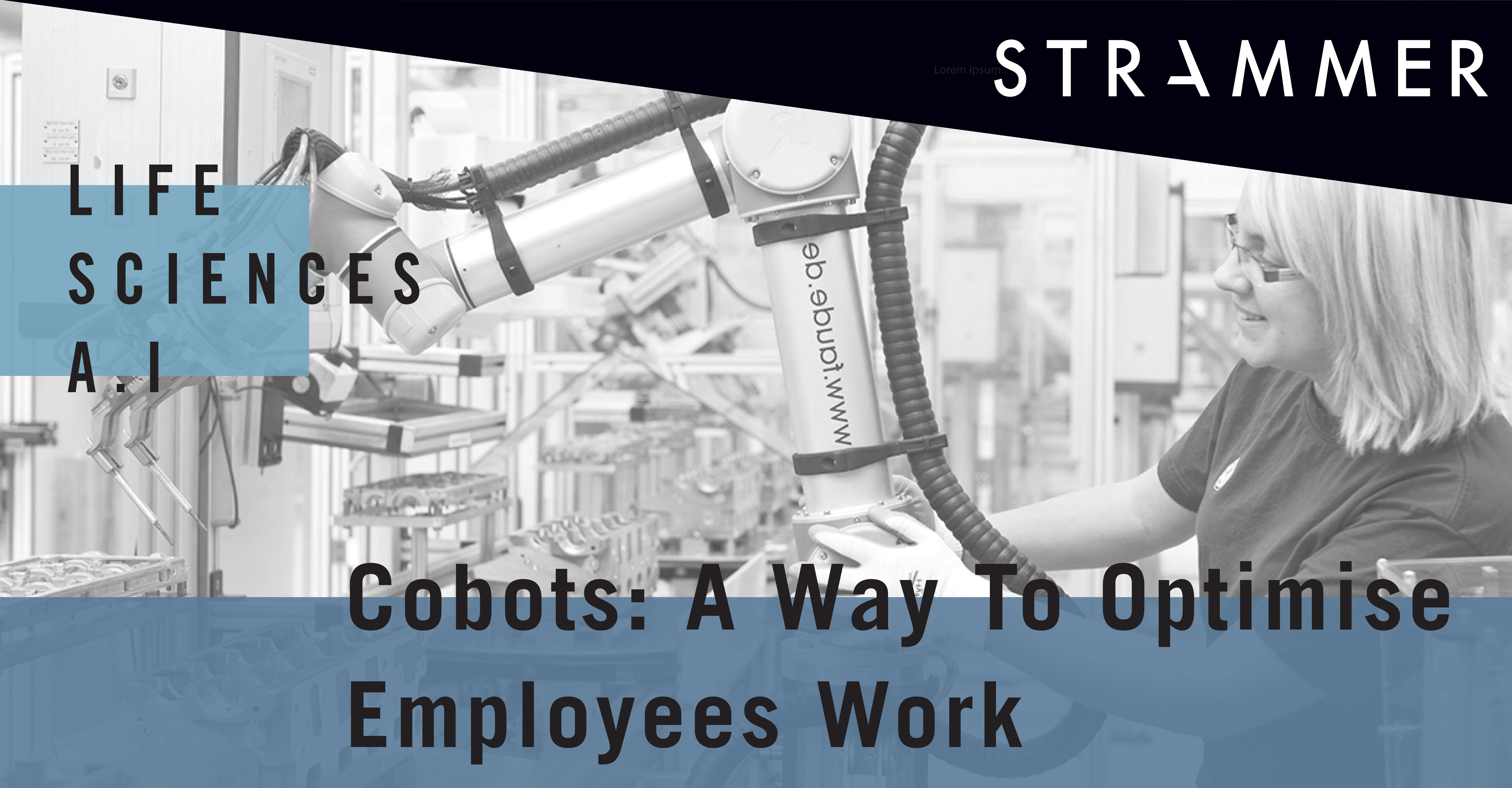Cobots in the Life Sciences industry
Robotic systems have revolutionised the industry a long time ago. They are constantly being developed and their benefits are endless. Among others, they have the amazing advantage of working at a faster pace than any human can, as well as working with substances that would be dangerous for humans. The life sciences industry really benefits from this evolution in robotic systems, given the large number of studies and research performed.
One of the most recent innovations in the robotic sector, are cobots, also called collaborative robots. They are managed and controlled by humans. Cobots were created to work alongside employees in order to facilitate tasks. They are totally safe to be around since they are sensitive to touch and the environment.
Contrarily to most robots, cobots do not need much of an investment, they are a cheaper alternative. According to Universal Robots, collaborative robotic arms pay themselves in 195 days. Cobots also have user-friendly software, which does not require a very complex know-how. Given their small size, they are very flexible and easily movable, which means they can be used for many different tasks.
Also, data collection can be a very complex process that needs to be done manually through different tools. Cobots enabled this process to become easier and simpler. They offer the option to gather data related to processes and results while they do their job.
Human contamination is a big problem in the life sciences industry. Cobots are a helping hand tackling this problem, given that a lot of times they help to reduce the contact between substances and workers.
In a more specific case, we have witnessed the use of cobotic arms in many surgeries. It allows surgeons to have a clearer view of the body and helps them to perform less invasive surgeries. In an area where precision and control are key, cobots are fundamental to increase the number of successful interventions.
A new case study from Universal Robots in 2019, showed that after introducing a cobot in an Indian company that produces coordinate measuring machines, their productivity improved by 50% to 90% and allowed machines to work 24/7.
The worldwide market revenue for collaborative robot in 2018 was 373.3 million USD. The predicted revenue for 2027 is 7.6 billion USD. The biggest buyers of cobots are small and medium-sized companies.
As we have seen, collaborative robots have a huge number of advantages and they made us realise that there is a space for workers and robotic systems in the workforce. Cobots are just a way of optimising our work.
References:
- The Future Of Work: Are You Ready for Smart Cobots? August 2018, Forbes
- Robotic revolutions and the life science industry, April 2017, Electronic Specifier
- COBOTS- A HELPING HAND TO THE HEALTHCARE INDUSTRY, November 2017, UNIVERSAL ROBOTS
- Carl Zeiss Case Study: Collaborative Robots increase Productivity by 90%, May 2019, Cobots.ie
- Cobots versus Robots in the Life Sciences Industry, April 2019, News Medical Life Sciences





